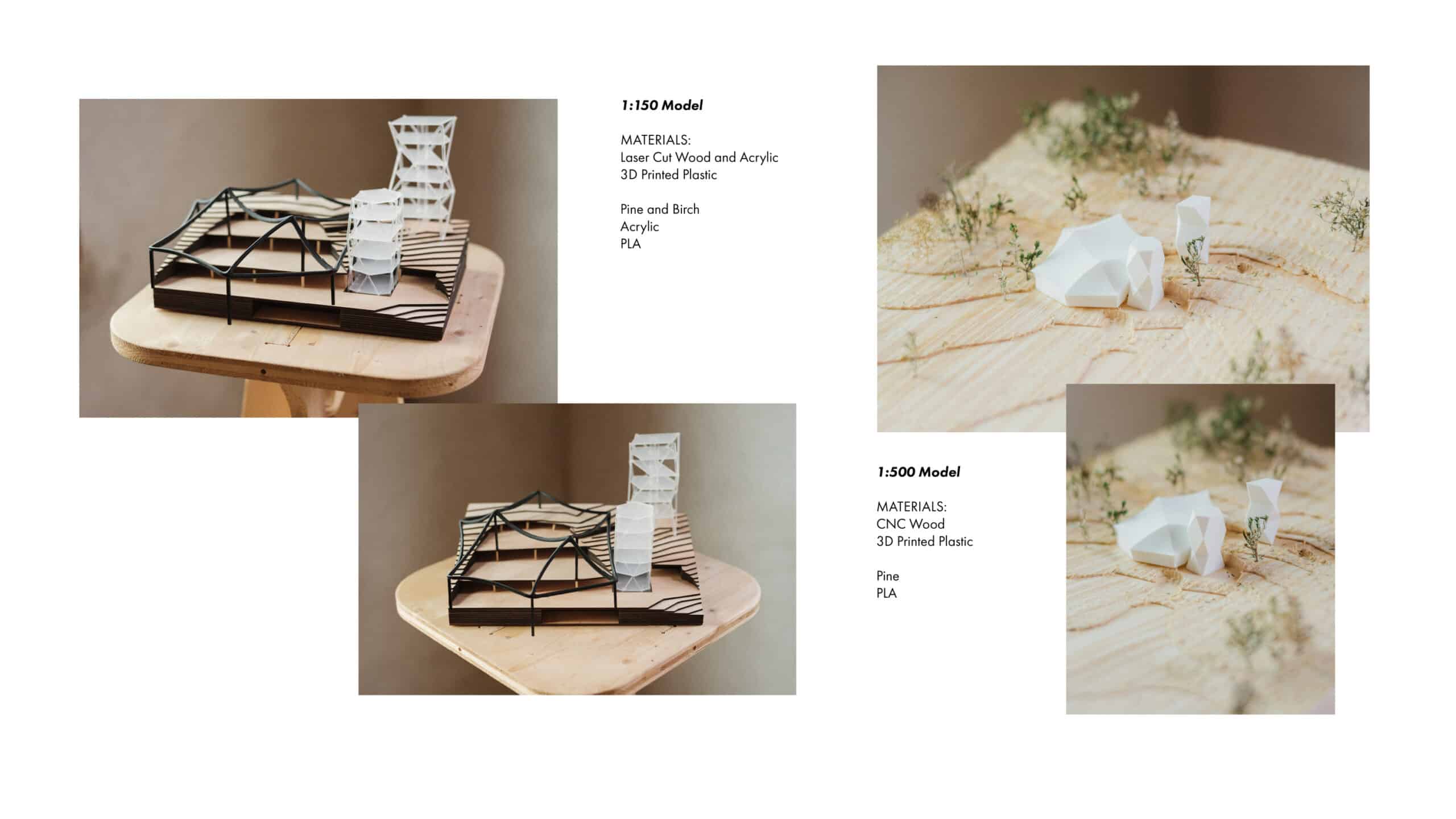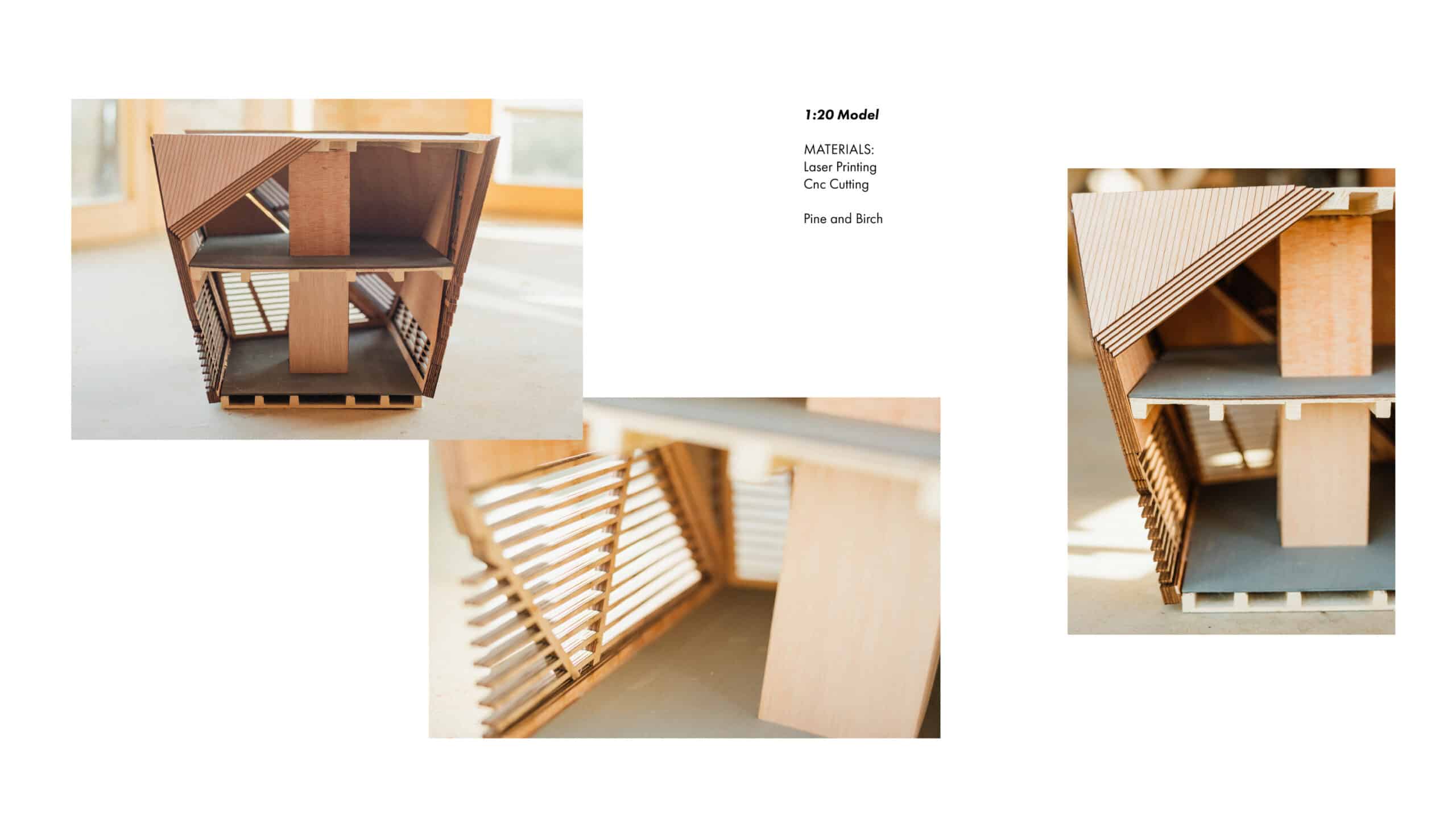
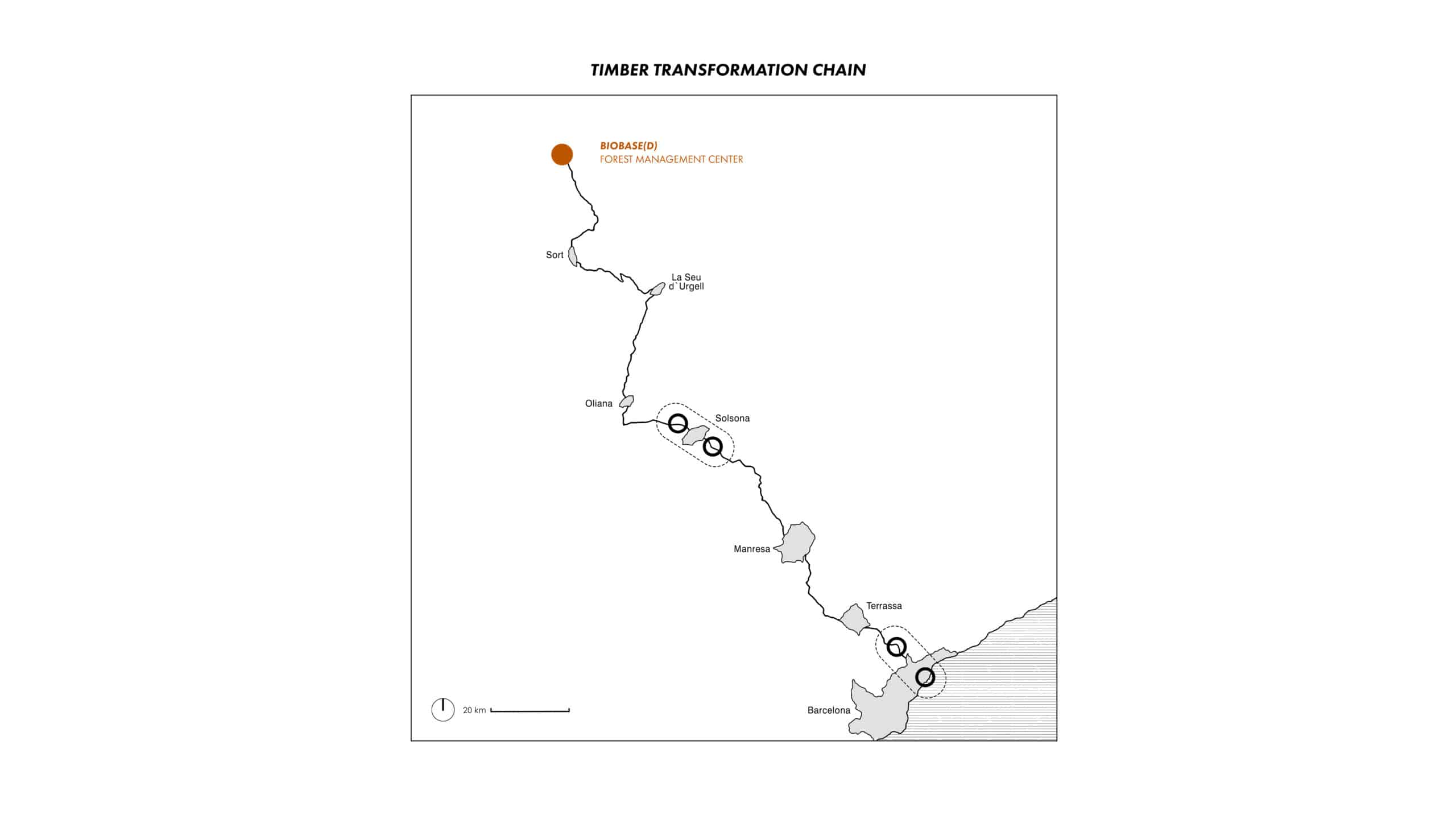
MISSION STATEMENT
BIOBASE(D) is a forest management and research center that serves as the first link in the timber transformation chain. Its mission is to transform the threat of forest fires into an opportunity through a threefold strategy: implementing sustainable forest management practices to enhance resilience, fostering a forest-based bioeconomy that adds value to timber and byproducts, and facilitating knowledge transfer to promote innovative solutions. By integrating these approaches, BIOBASE(D) aims to create a model for sustainable forestry that not only mitigates fire risks but also supports local economies and environmental stewardship.
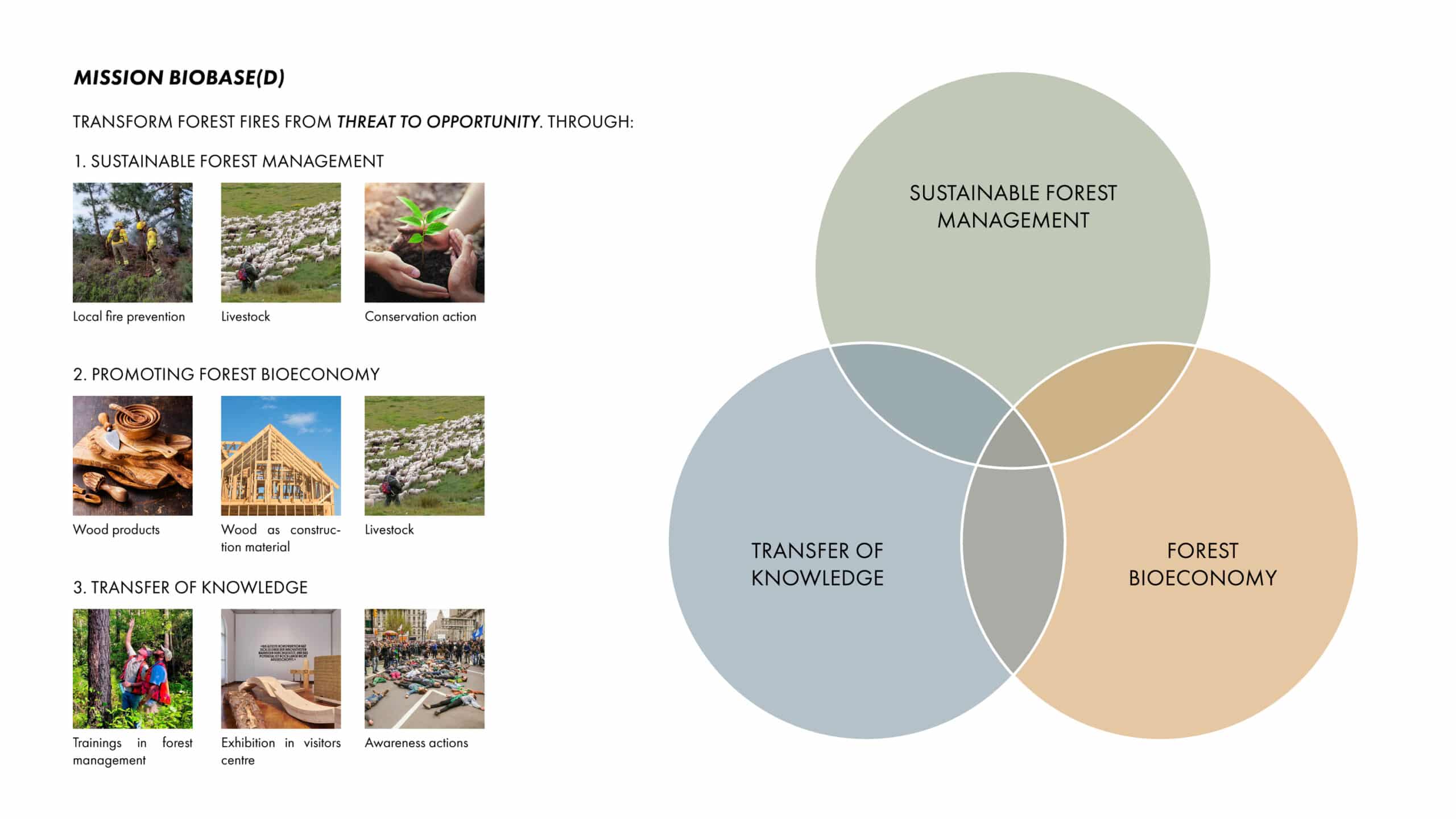
FORM FINDING
Located at an altitude of 1,550 meters in the Pyrenees of northern Spain, BIOBASE(D) experiences cold temperatures year-round. Psychometric charts indicate that both winter and summer conditions fall largely outside the ideal comfort zone, making heat generation and retention key design priorities. To address this, the building is partially embedded into the mountain to minimize heat loss, while its stepped levels are set back to maximize solar gain. Two distinctive towers with triangular structures serve as visual landmarks, and a tent-like covering over the building’s base creates a greenhouse effect, further enhancing thermal performance. These strategies work together to ensure a comfortable and energy-efficient indoor environment despite the site’s harsh climate.
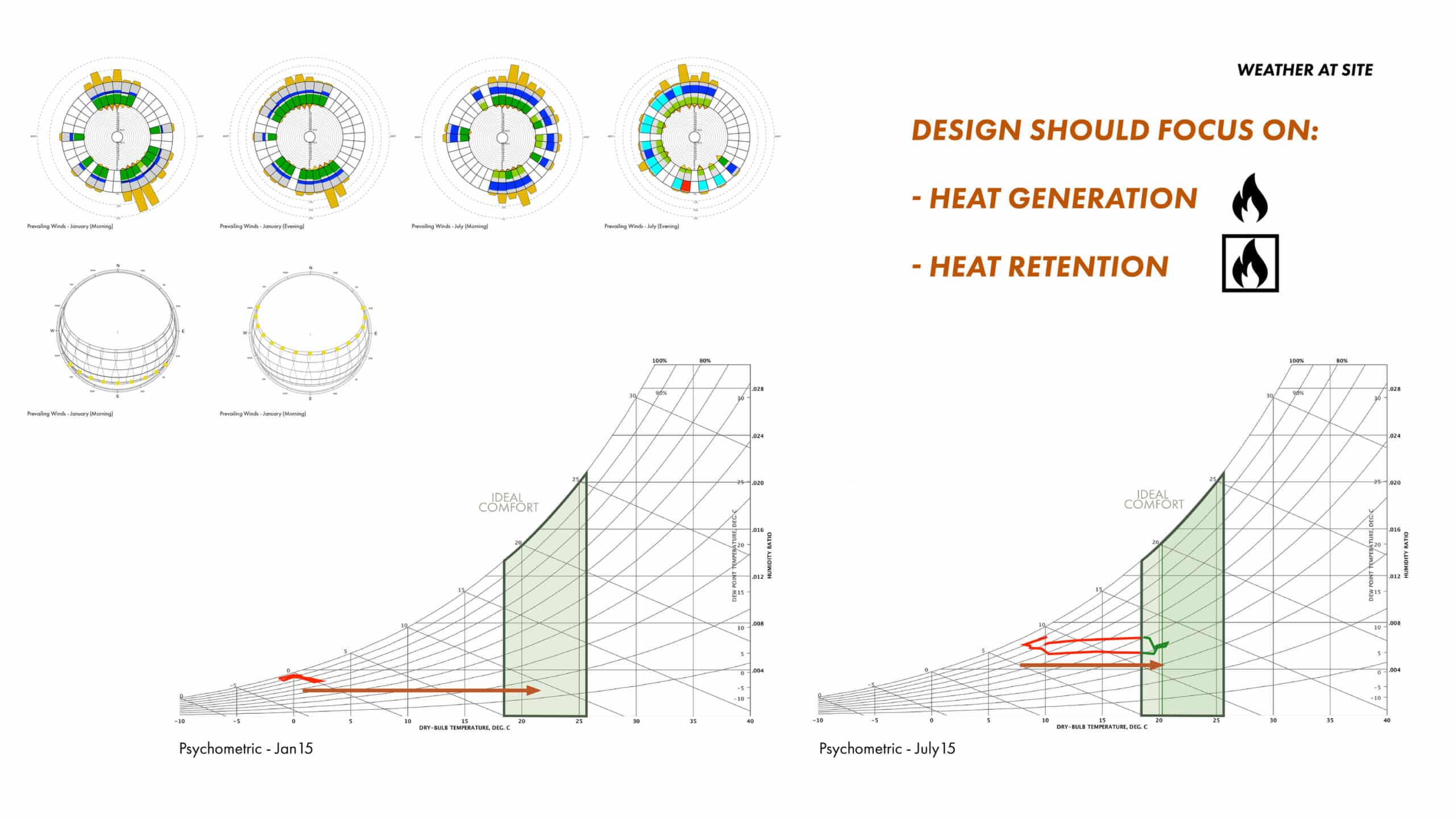
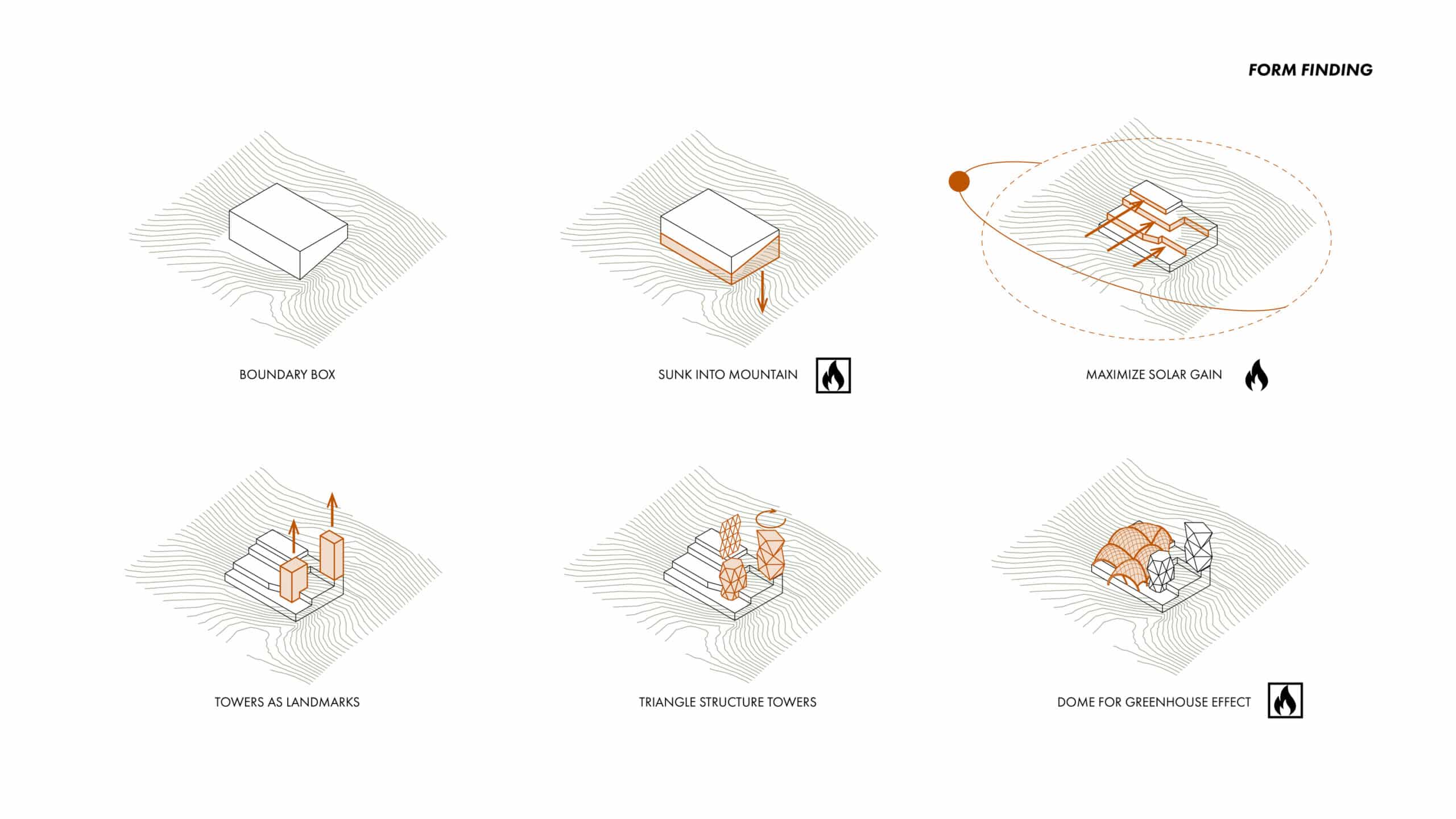
PROGRAM / CIRCULATION
The program of BIOBASE(D) is organized into four main categories: industry (offices, research center, vehicle parking, and workshops), residential spaces (dormitories and shared living facilities), a visitor center (reception, café with terrace, and exhibition area), and a dedicated area for sheep. The building features three distinct entrances: a pedestrian entrance for visitors and employees, a vehicle entrance for forestry management operations, and a separate entrance for sheep. The pedestrian entrance leads directly to the second floor, the most public level of the building. Below, the ground and first floors serve as semi-private spaces primarily for employees, while the upper floors are reserved exclusively for residents, ensuring a clear gradient of accessibility and privacy throughout the structure.
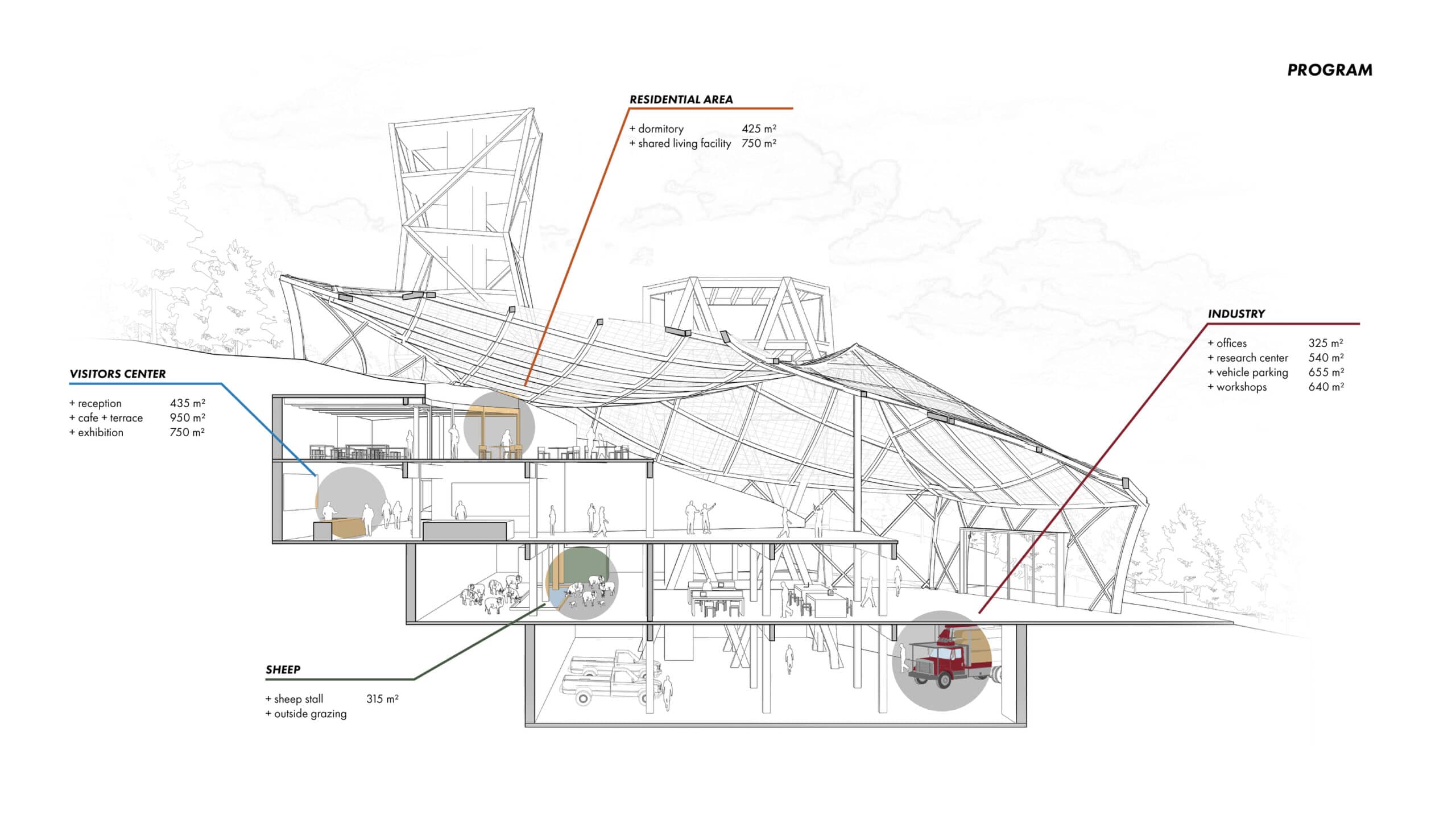
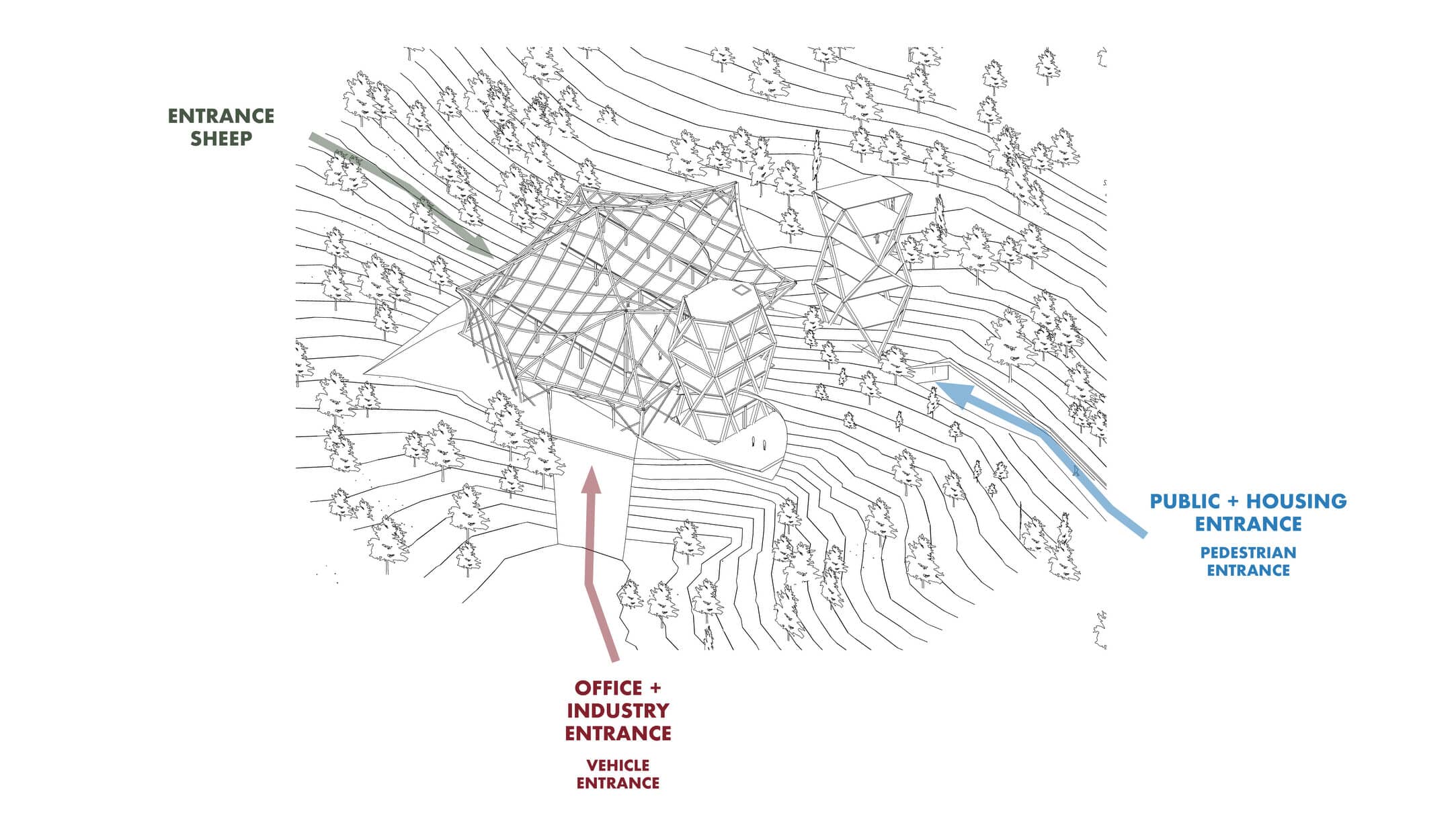
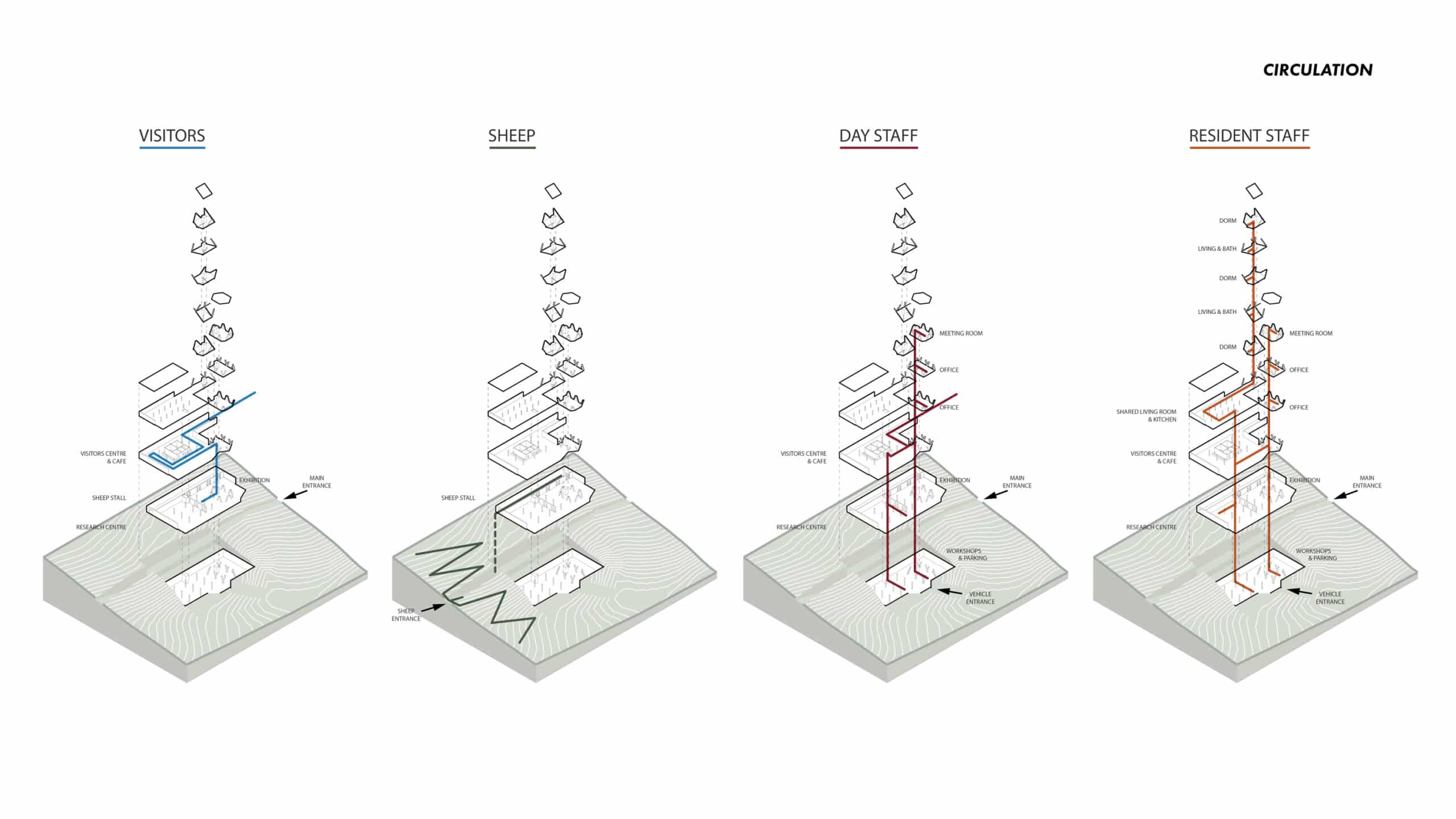
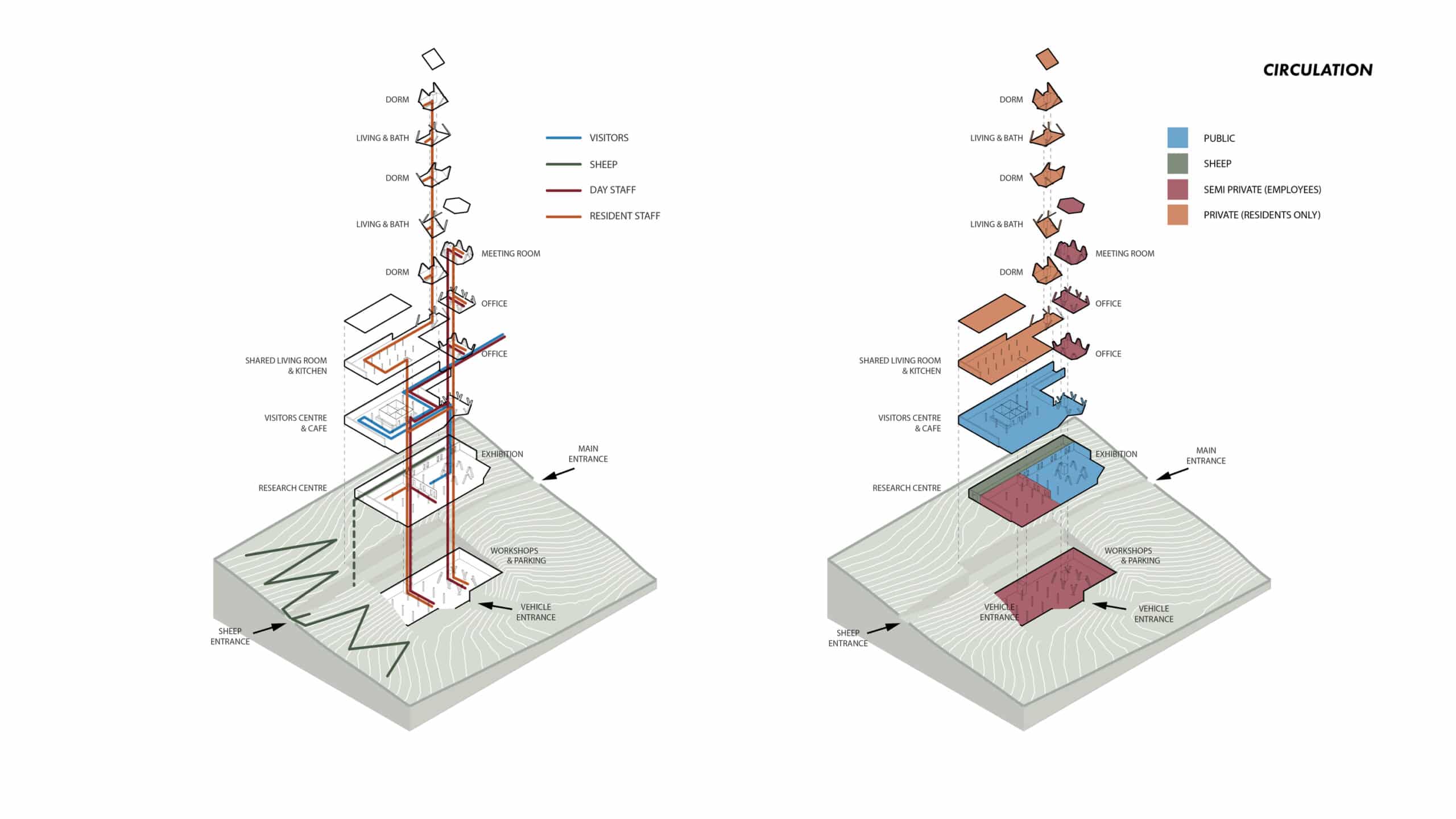
MATERIALITY / STRUCTURE
One of BIOBASE(D)’s core missions is to promote the forest bioeconomy, with a key focus on advocating for wood as a sustainable construction material. To lead by example, the building itself showcases the versatility of wood in various applications. Wood is used extensively in both the structural framework and the building envelope across all sections of the facility, demonstrating its potential for durability, efficiency, and aesthetic appeal.
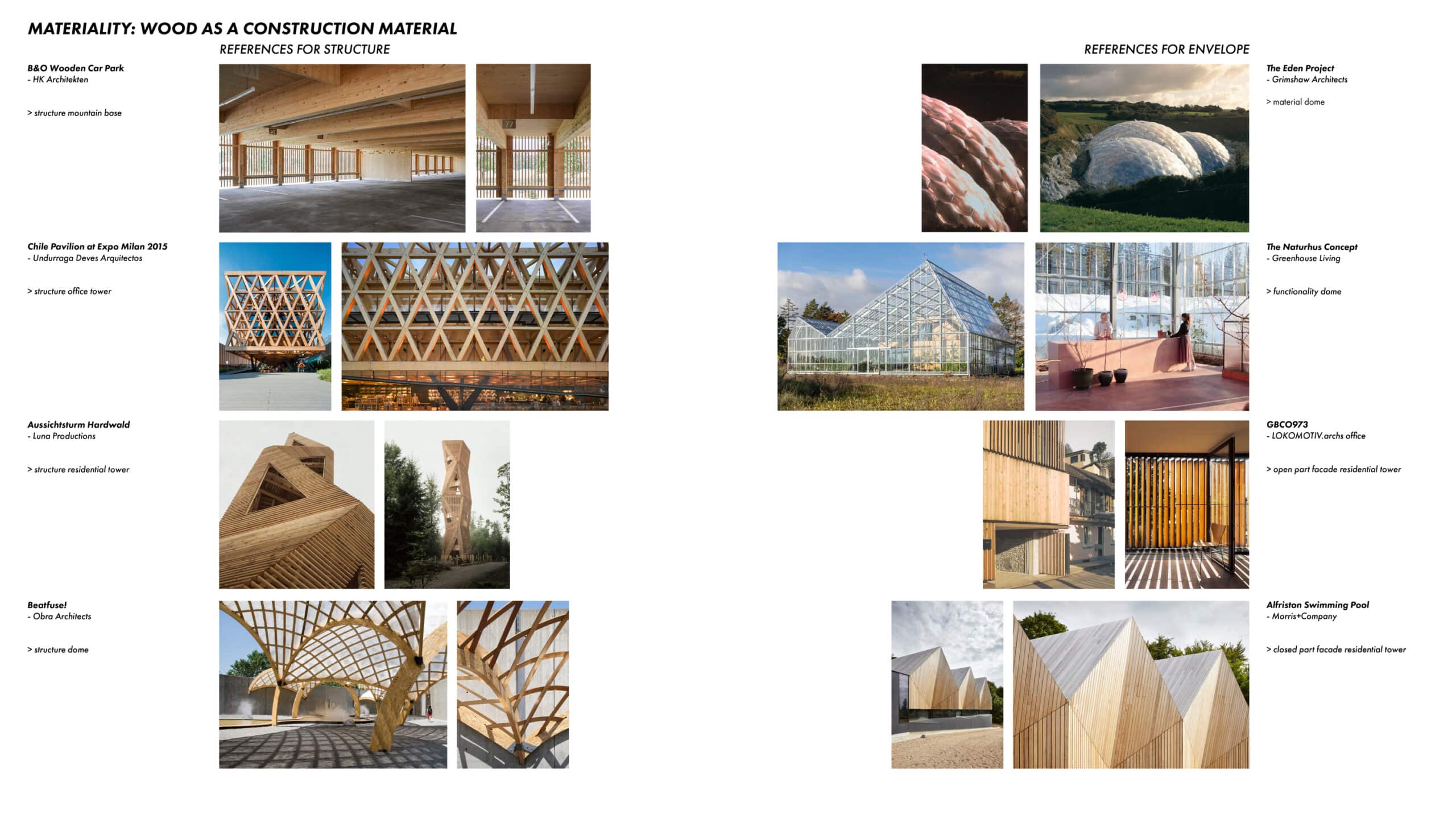

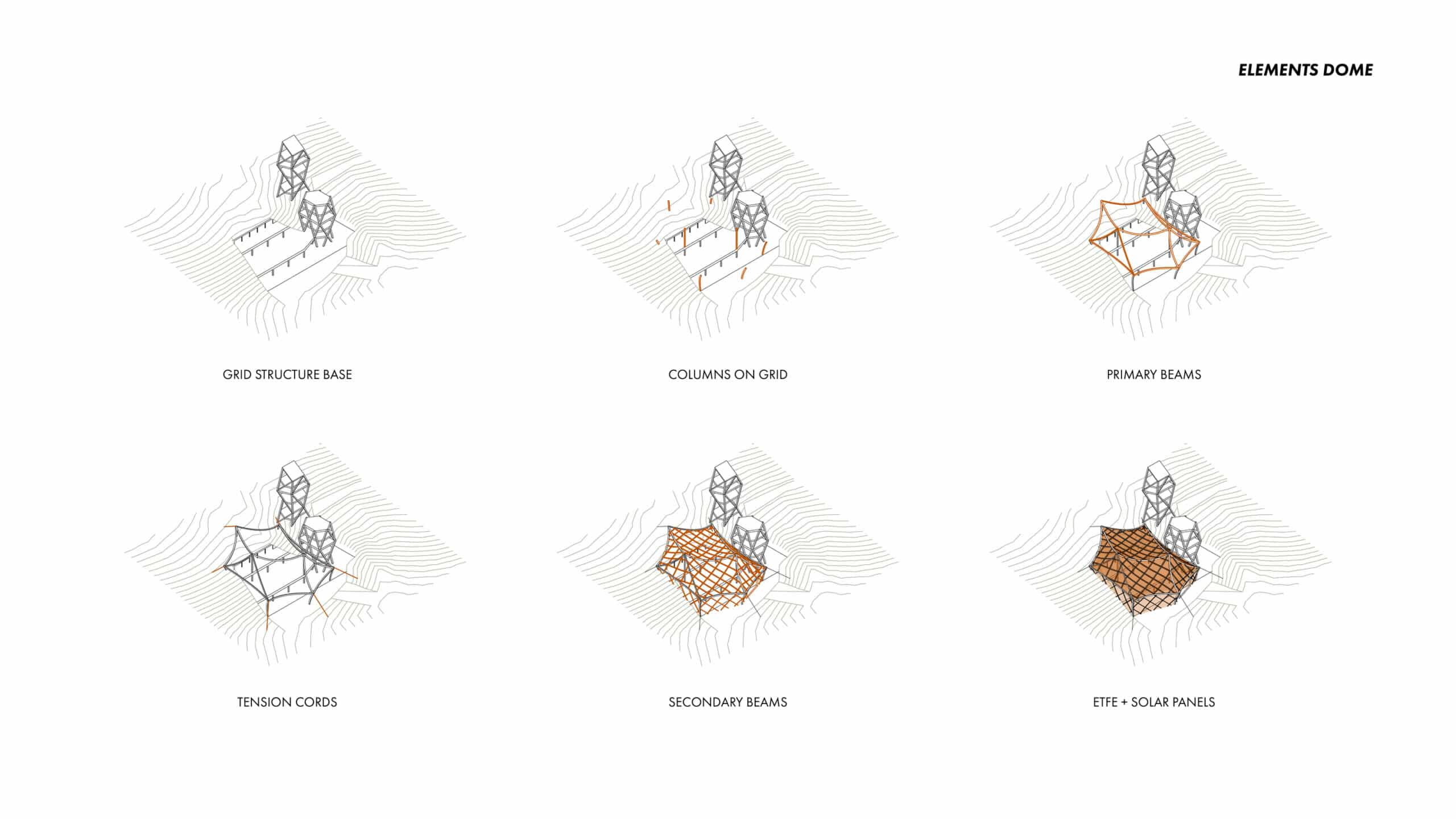
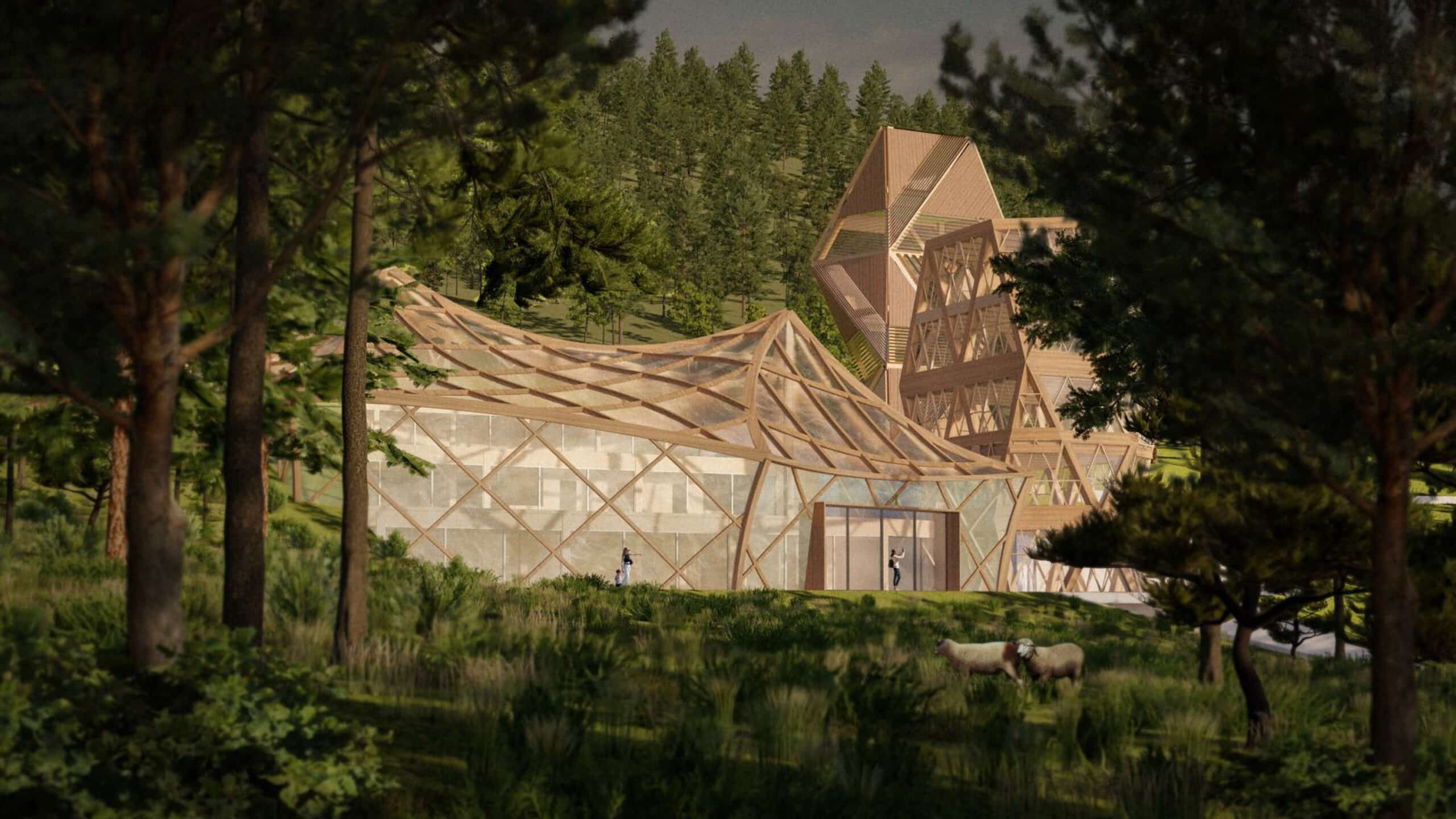
ENVELOPE SYSTEM / TRANSPORTATION
For the envelope design, we focused on the tall residential tower, optimizing it for the region’s extreme climate. The façade consists of both closed sections and windows, which are covered with adjustable louvers. These louvers are designed to adapt to seasonal conditions: in winter, they rotate to allow maximum solar gain during the day, while in summer, they block direct sunlight while still permitting airflow for natural cross-ventilation. At night, the shutters fully close, and a reflective inner layer helps retain heat by reflecting it back into the interior.
Given the building’s remote and hard-to-reach location, maximizing prefabrication was a priority. The façade of the residential tower is composed of prefabricated panels, each consisting of a closed section and an open section (window). These elements are assembled on-site and then attached to the building structure, streamlining construction while ensuring precision and efficiency.
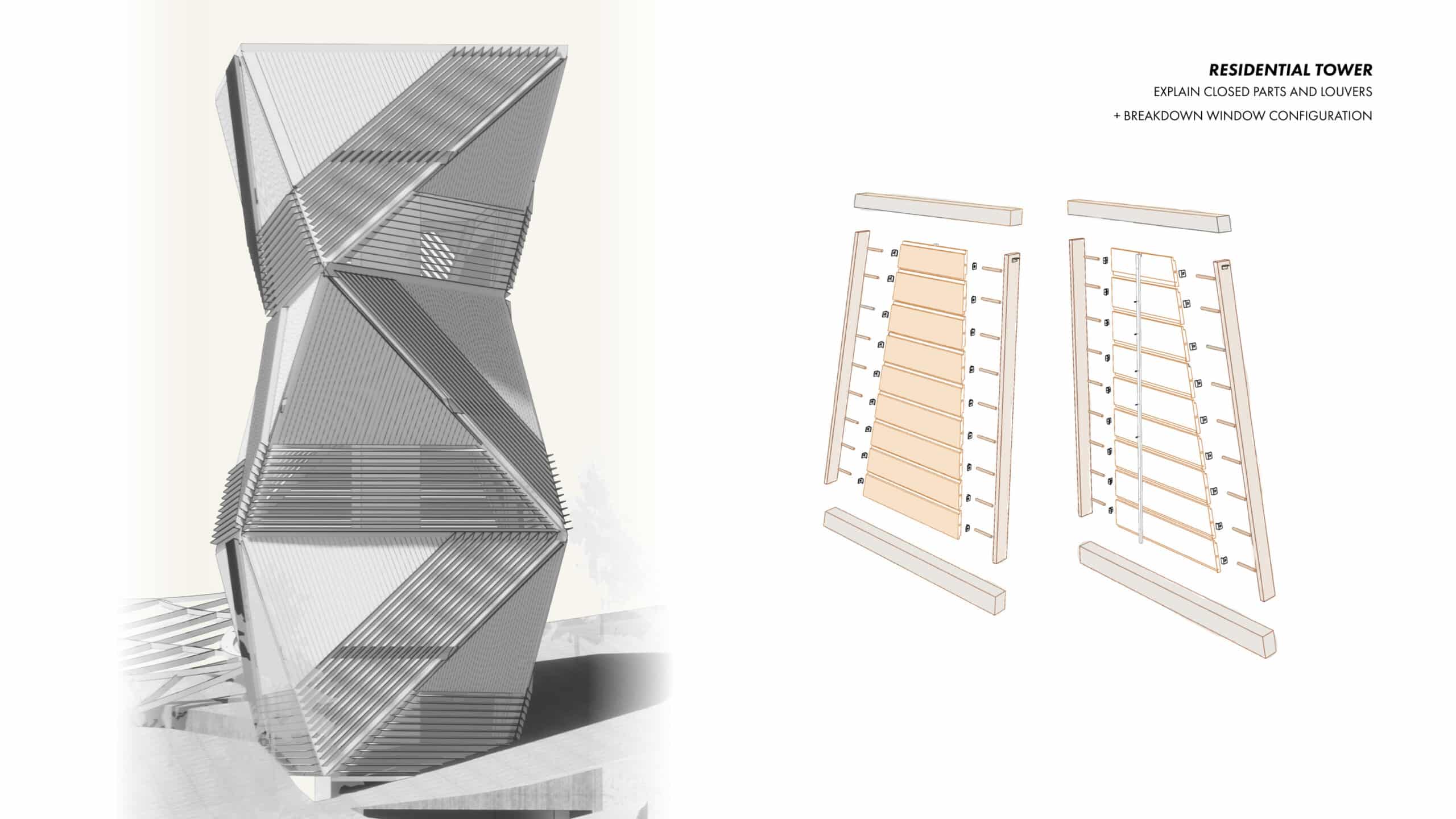

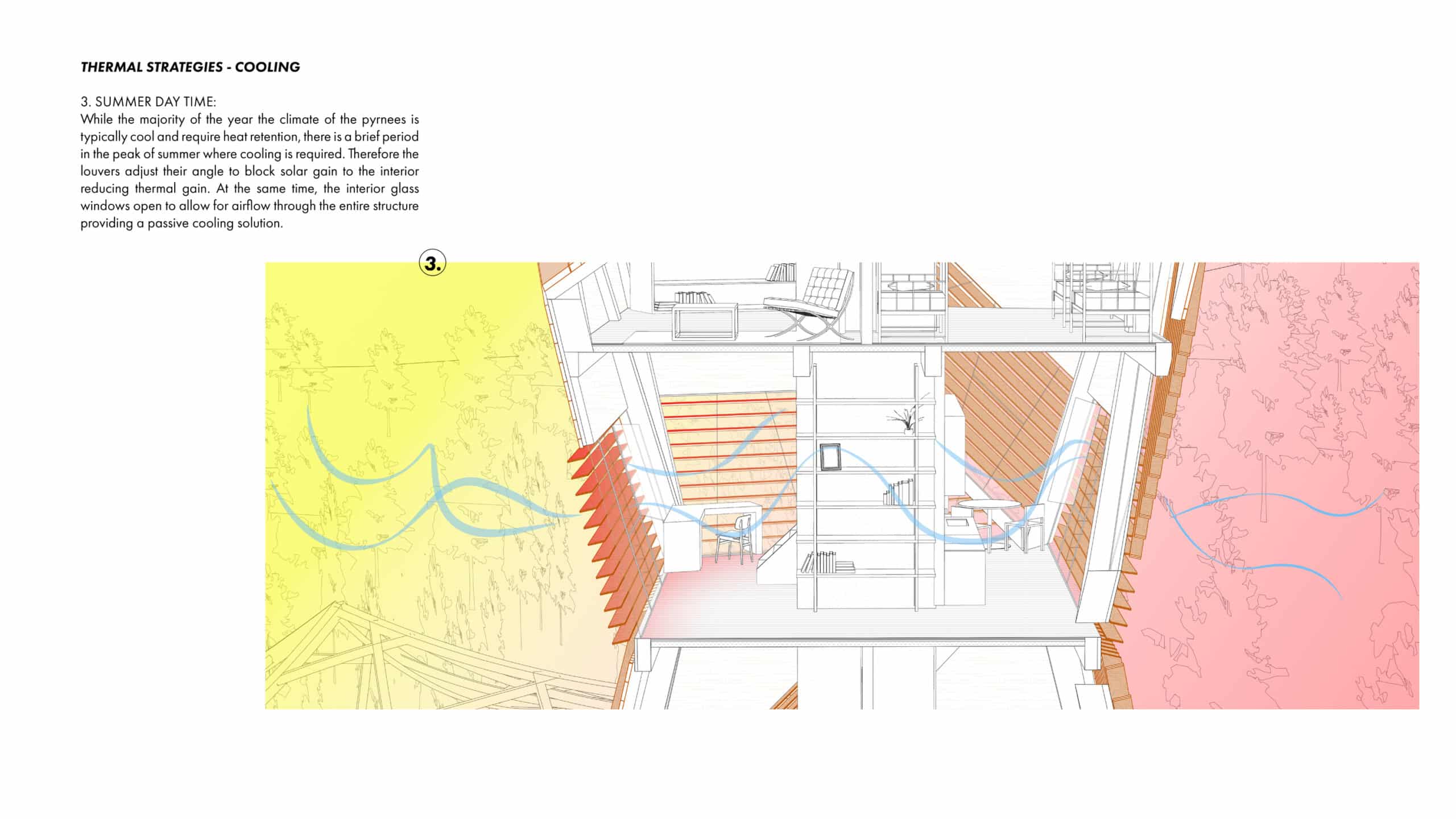
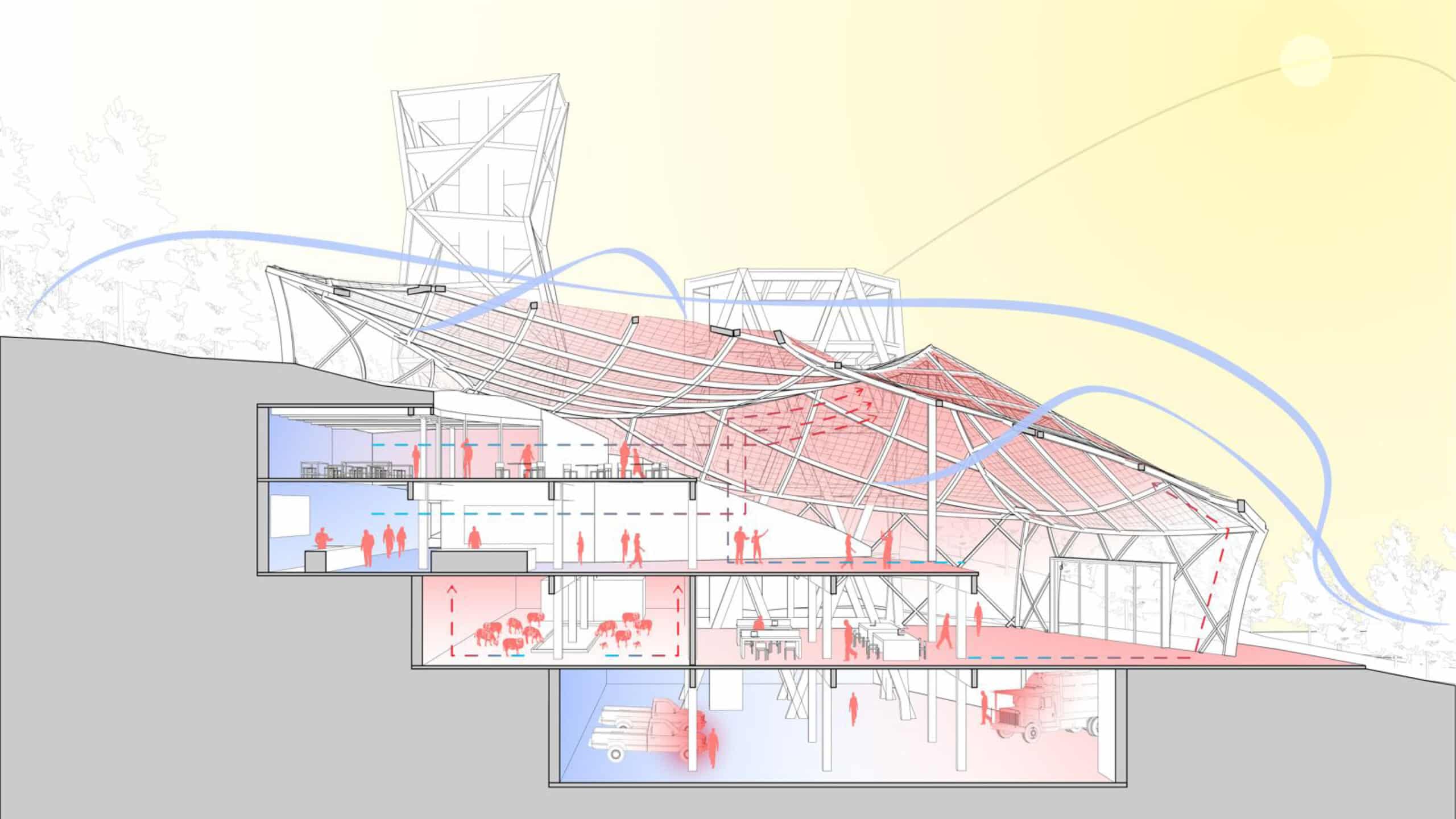
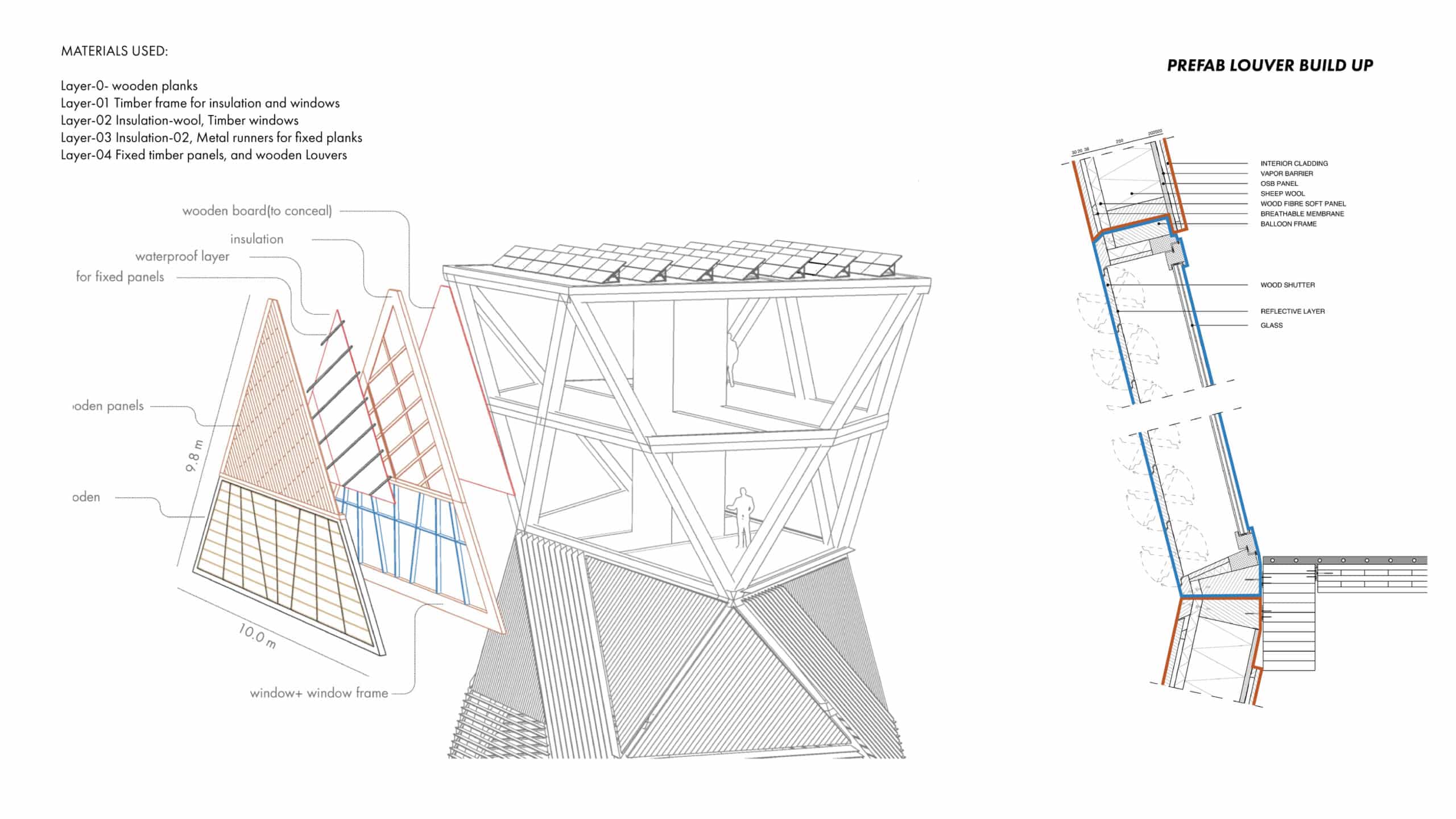
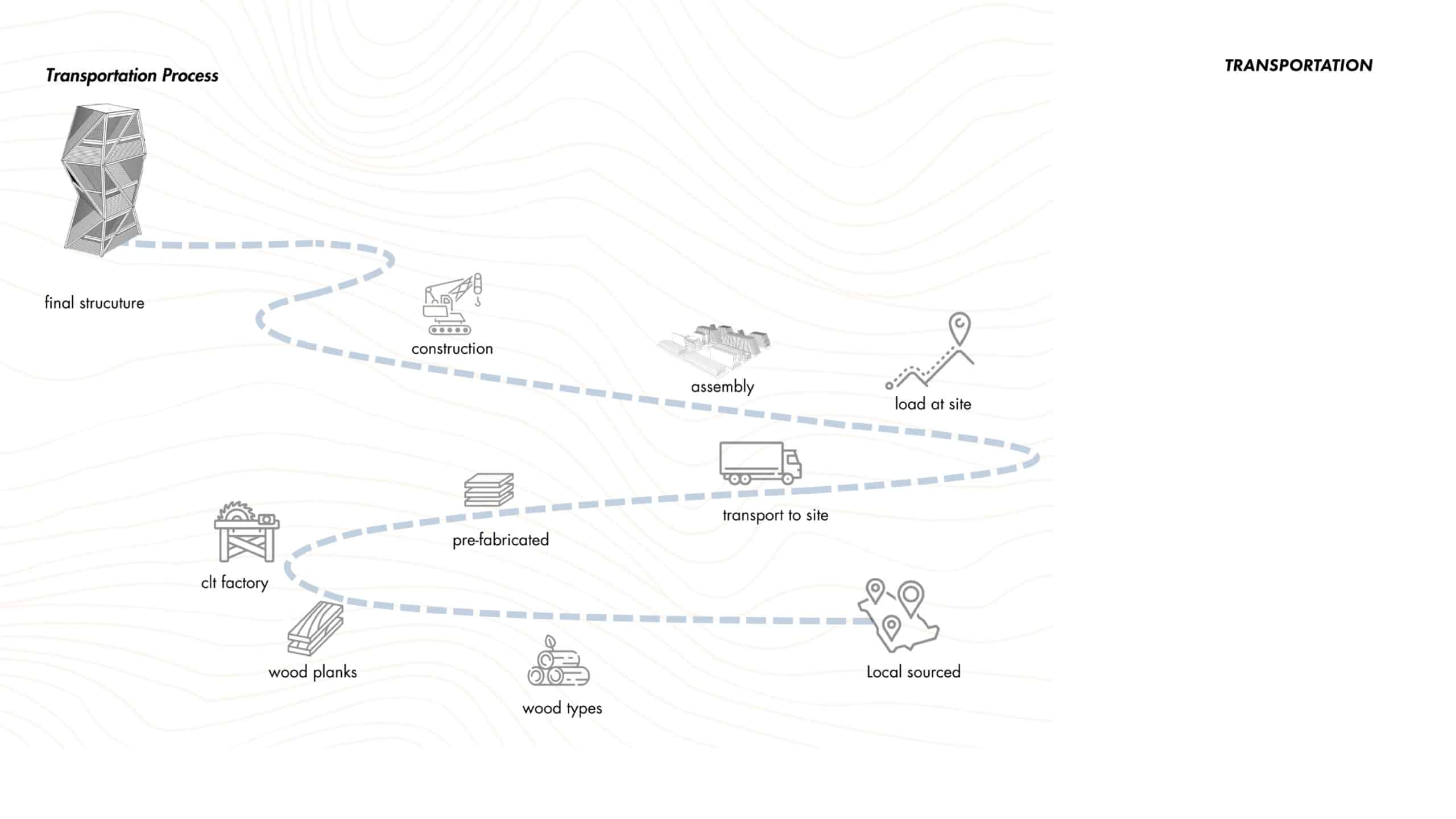
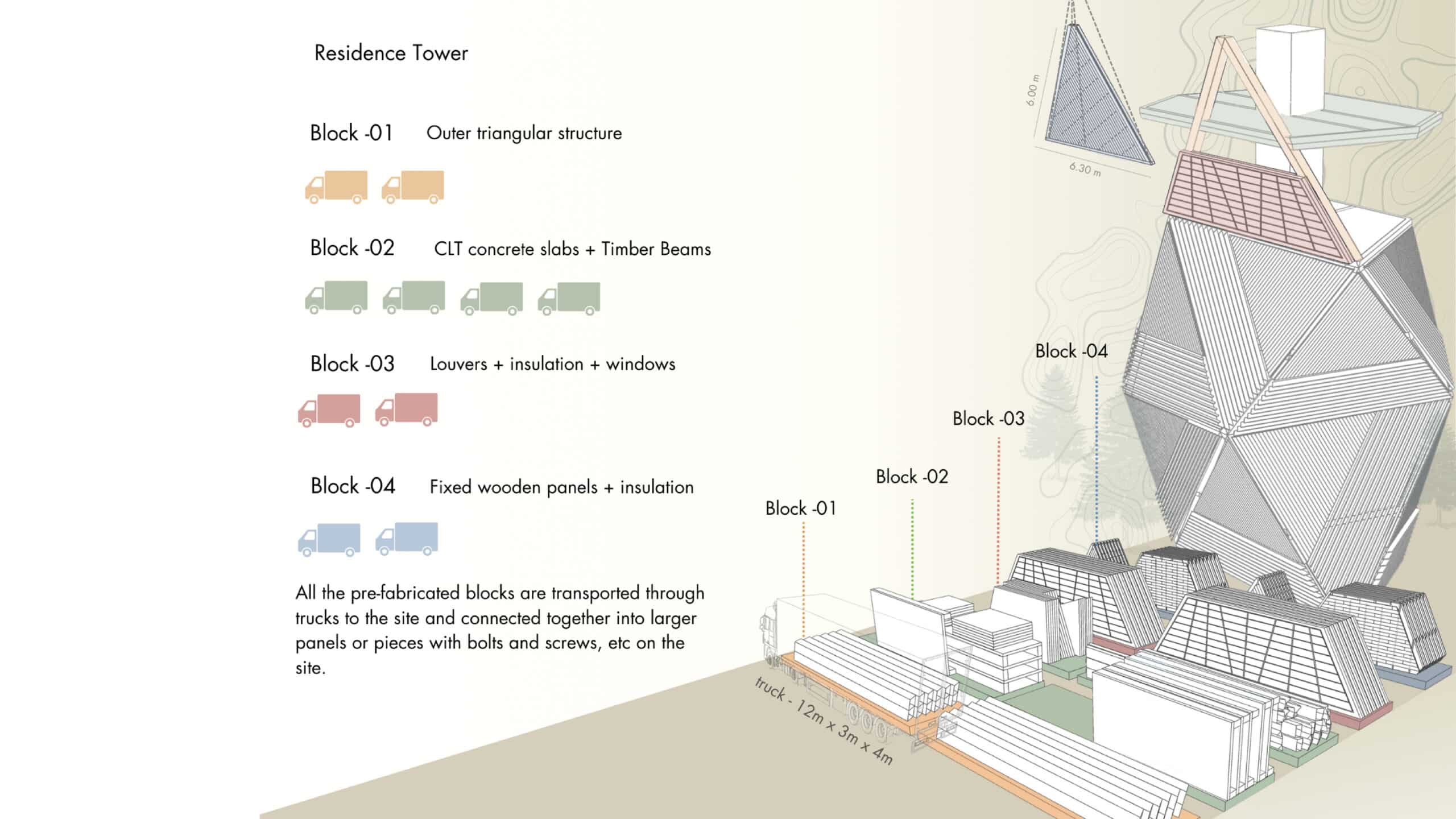
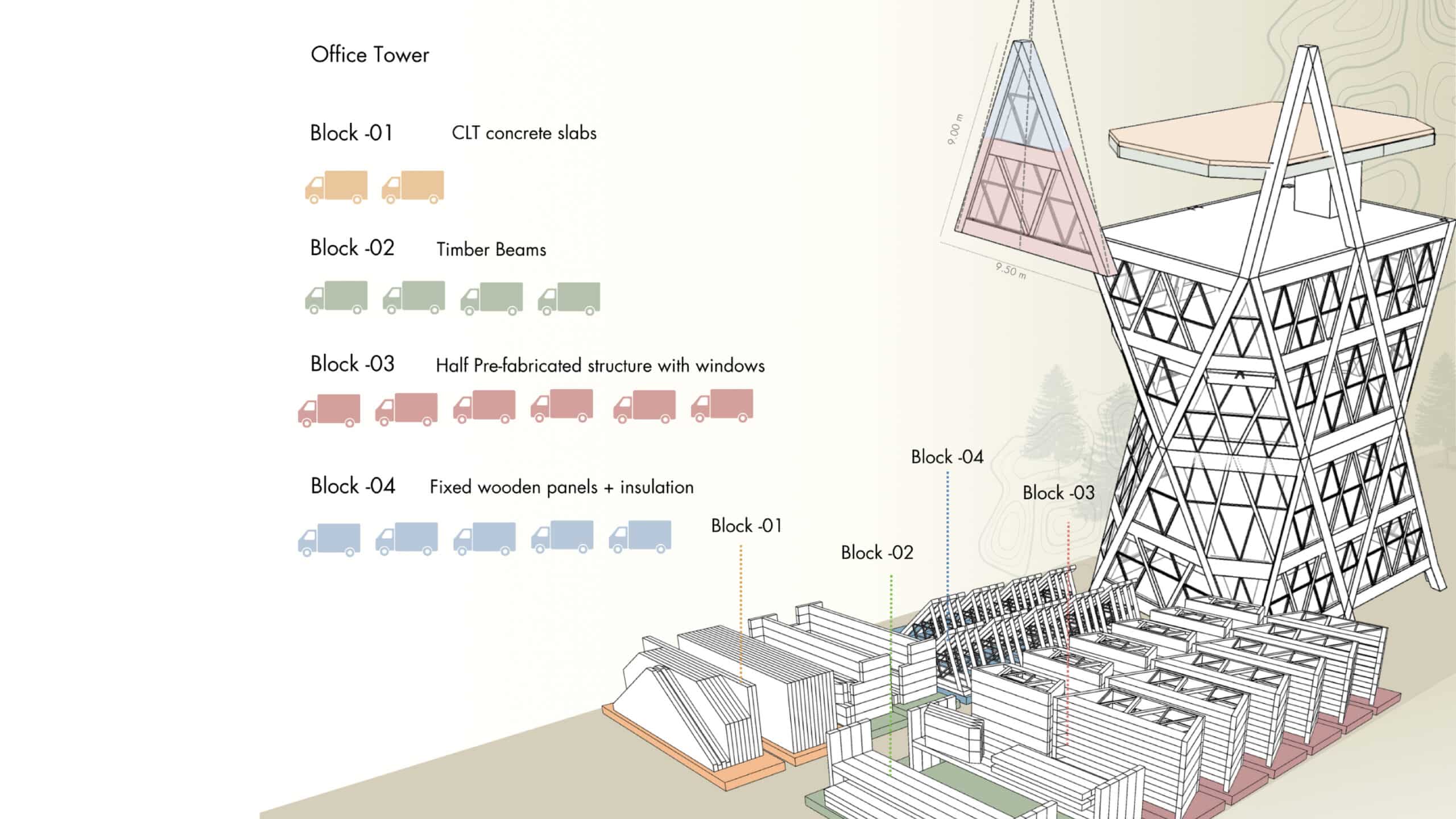
IMPACT
To conclude, BIOBASE(D) embodies its mission of transforming forest fires from a threat into an opportunity through its design and function. The building actively contributes to this goal in three key ways: by housing livestock as part of sustainable land management, by showcasing the potential of timber as a construction material, and by facilitating knowledge transfer through the exhibition space in the visitor center. Together, these elements reinforce the center’s role as a hub for innovation, education, and sustainable forestry.
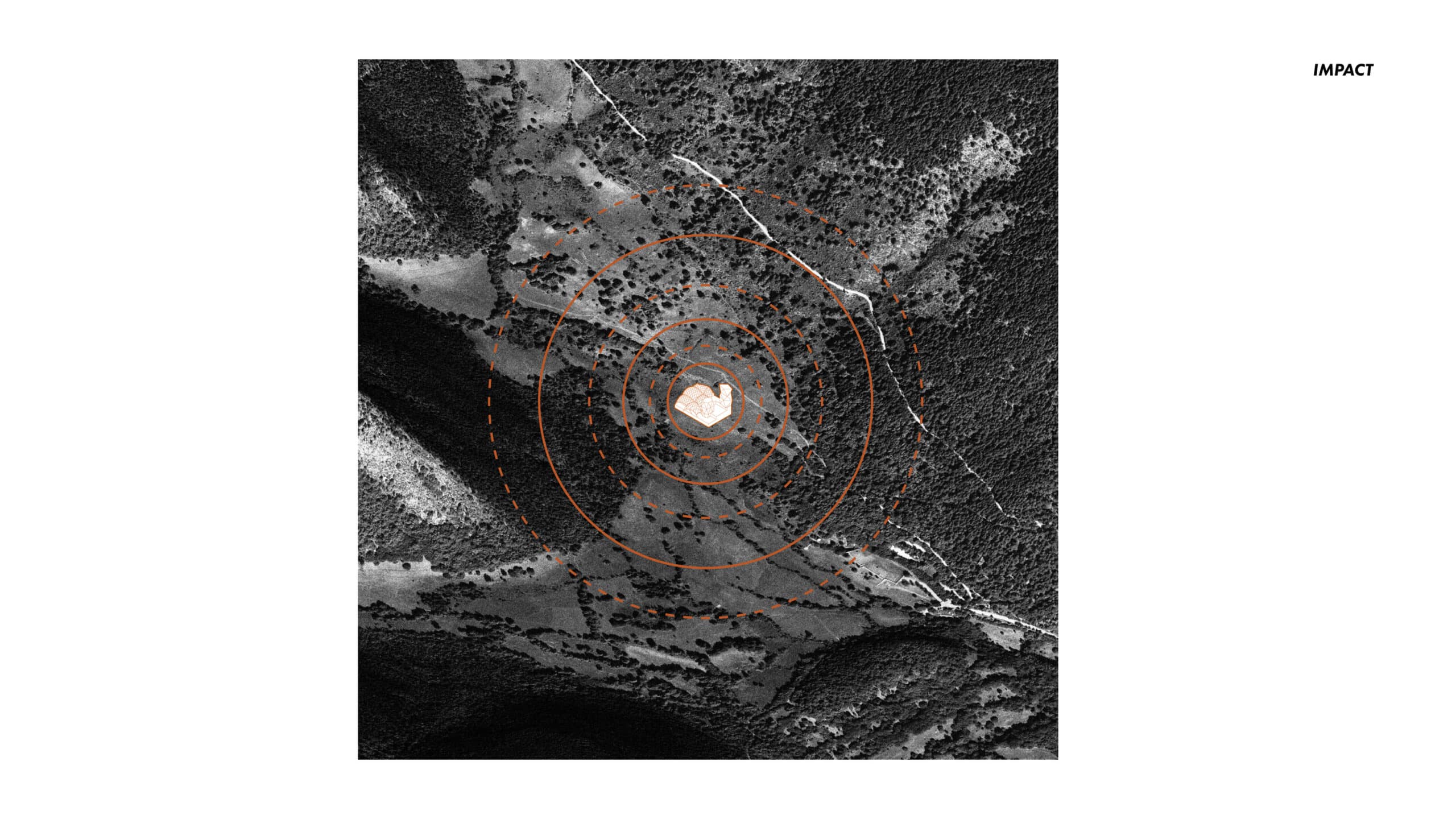
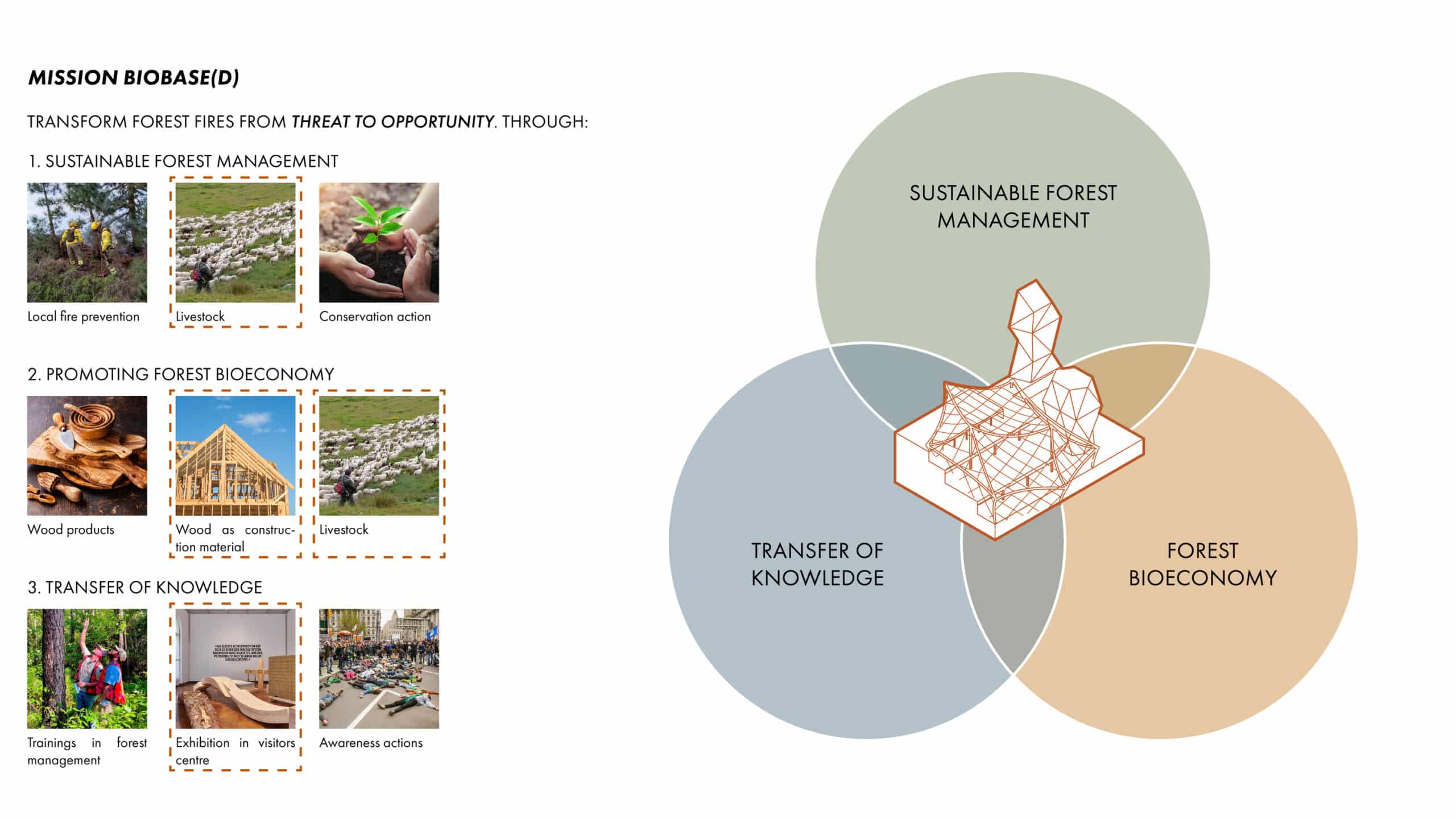
MODELS
